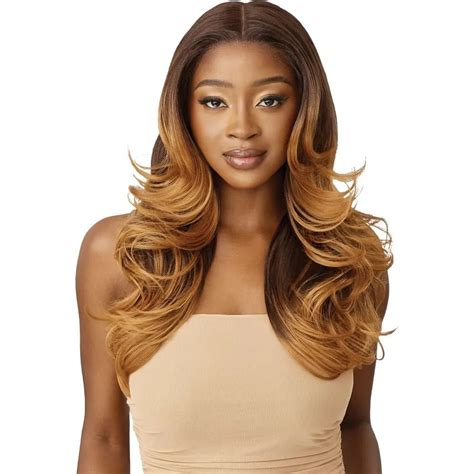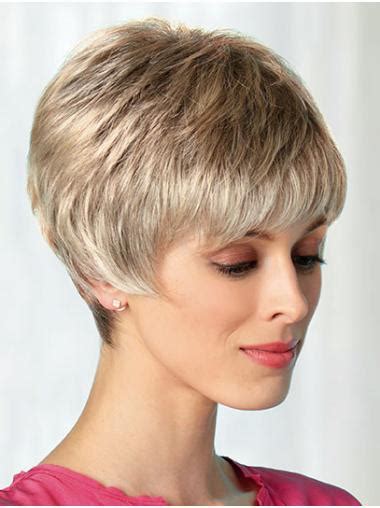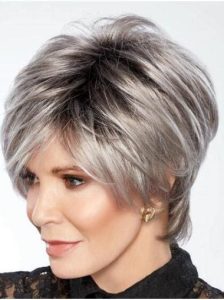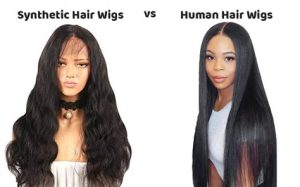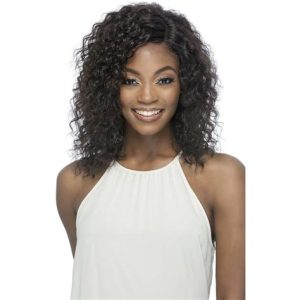2025’s Fire: Sythetic Wigs VS Lace Front Wigs
A Comparative Review of Two Popular Wig Types
With the ever-growing popularity of wigs, it’s no wonder that there are so many different types and styles to choose from. Two of the most popular types of wigs are synthetic wigs and lace front wigs. But what’s the difference between the two? And which one is right for you?

In this article, we’ll take a closer look at synthetic wigs and lace front wigs, comparing their pros and cons to help you make the best decision for your needs.
Synthetic Wigs: The Basics
Synthetic wigs are made from man-made fibers, such as nylon, polyester, or acrylic. They are typically less expensive than lace front wigs, and they come in a wide variety of styles and colors.
Pros:
- Affordable: Synthetic wigs are typically less expensive than lace front wigs.
- Versatile: Synthetic wigs come in a wide variety of styles and colors, so you can find one that matches your personal style.
- Durable: Synthetic wigs are made from durable materials, so they can withstand everyday wear and tear.
Cons:
- Unnatural look: Synthetic wigs can sometimes look unnatural, especially in bright light.
- Heat-resistant: Synthetic wigs are not heat-resistant, so you can’t use heat styling tools on them.
- Less comfortable: Synthetic wigs can be less comfortable to wear than lace front wigs, especially in warm weather.
Lace Front Wigs: The Basics
Lace front wigs are made with a lace base that is attached to the forehead. The lace is then covered with a layer of hair, which is typically made from human hair or synthetic fibers. Lace front wigs are more expensive than synthetic wigs, but they offer a more natural look and feel.
Pros:
- Natural look: Lace front wigs offer a more natural look than synthetic wigs, especially in bright light.
- Versatile: Lace front wigs can be styled in a variety of ways, so you can find one that matches your personal style.
- Comfortable: Lace front wigs are more comfortable to wear than synthetic wigs, especially in warm weather.
Cons:
- Expensive: Lace front wigs are more expensive than synthetic wigs.
- Delicate: Lace front wigs are more delicate than synthetic wigs, so they require more care.
- Time-consuming to apply: Lace front wigs take longer to apply than synthetic wigs.
Which Type of Wig Is Right for You?
The best type of wig for you depends on your individual needs and preferences. If you’re looking for an affordable, versatile, and durable wig, then a synthetic wig may be a good option for you. However, if you’re looking for a wig that offers a more natural look and feel, then a lace front wig may be a better choice.
Here is a table that summarizes the key differences between synthetic wigs and lace front wigs:
| Feature | Synthetic Wigs | Lace Front Wigs |
|---|---|---|
| Price | Less expensive | More expensive |
| Variety | Wide variety of styles and colors | More limited variety of styles and colors |
| Durability | Durable | More delicate |
| Comfort | Less comfortable | More comfortable |
| Natural look | Less natural | More natural |
| Heat resistance | Not heat-resistant | Heat-resistant |
| Application time | Shorter application time | Longer application time |
Conclusion
Synthetic wigs and lace front wigs are both popular choices for people who want to change their look or cover up hair loss. However, the best type of wig for you depends on your individual needs and preferences. If you’re looking for an affordable, versatile, and durable wig, then a synthetic wig may be a good option for you. However, if you’re looking for a wig that offers a more natural look and feel, then a lace front wig may be a better choice.
FAQs
1. How do I choose the right wig for me?
The best way to choose the right wig for you is to consider your individual needs and preferences. If you’re not sure what type of wig is right for you, you can consult with a hairstylist or wig specialist.
2. How do I care for my wig?
The best way to care for your wig is to follow the manufacturer’s instructions. However, here are some general tips:
- Wash your wig regularly with a mild shampoo and conditioner.
- Avoid using heat styling tools on your wig.
- Store your wig in a cool, dry place.
3. How long will my wig last?
The lifespan of your wig depends on a number of factors, such as the type of wig, how often you wear it, and how well you care for it. However, with proper care, most wigs can last for several years.
4. Can I wear a wig every day?
Yes, you can wear a wig every day. However, it’s important to give your scalp a break from time to time. Try to take your wig off at night or when you’re not going to be out in public.
5. How do I hide my wig line?
There are a few different ways to hide your wig line. One way is to use a wig cap. Another way is to use a headband or scarf. You can also use makeup to blend your wig line with your skin tone.
6. How do I keep my wig from slipping?
There are a few different ways to keep your wig from slipping. One way is to use a wig grip. Another way is to use bobby pins. You can also use a wig tape or glue.
7. How do I style my wig?
You can style your wig in a variety of ways. You can use heat styling tools to curl or straighten your wig. You can also use hairspray or mousse to style your wig.
8. How do I remove my wig?
To remove your wig, simply unclip or untie the straps. You can then gently pull the wig off of your head.
